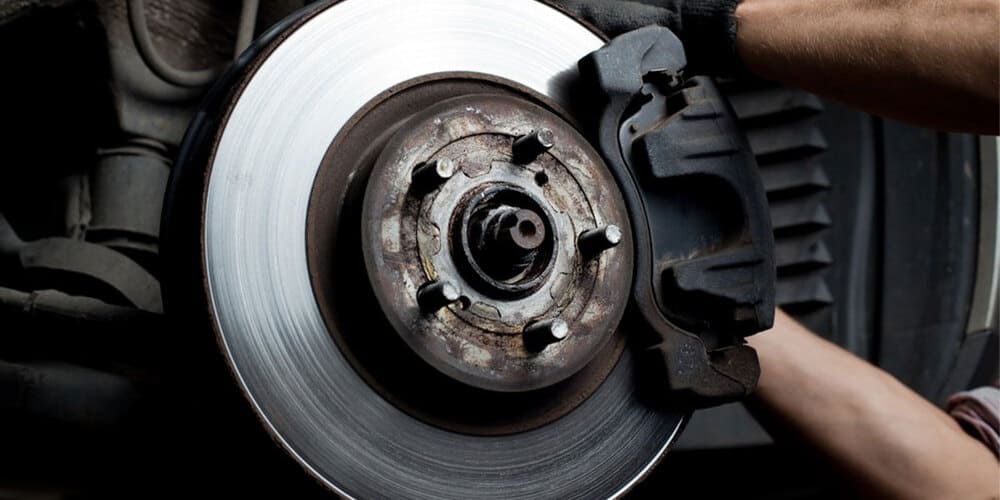
In 2015, the automotive industry, EPA, and U.S. states agreed to reduce the use of copper and other materials in motor vehicle brake pads. This agreement calls for reducing copper in brake pads to less than 5% by weight in 2021, and 0.5% by 2025. Typically, a brake pad is made from a mixture of graphite, iron, and copper, bonded together to form the pad. Copper was a great addition to brake pad material because it absorbed heat and dampened vibrations, which contribute to the unwanted noises most drivers prefer to go without. While removing it is great for the environment, it has also caused concerns from consumers, such as complaints of loud noises.
HOW DO BRAKES WORK?
Simplified, braking is the friction between the braking pad and rotors attached to the wheels, decreasing the speed of the vehicle until it stops.
When you press the brake pedal, it multiplies the force applied on the brake fluid in the master cylinder. This increases pressure and sends the pressurized brake fluid to the brake calipers and wheel cylinders. The hydraulic oil presses the brake pad against the rotor, clamping the two together and creating friction and heat. This, along with friction generated between the tire and road, slows rotor and axle rotation and stops the vehicle.
WHY DO I HEAR NOISE WHEN I BRAKE?
Ceramic, graphite, and titanite are more common materials used to create brake pads. Generally, noises can be caused by:
- Worn out brake pad
- Cheap or low-quality pad
- Worn out rotor disks
- Solid items between the brake pad and rotor
- Parking your car for too long
- Unlubricated caliper screws
- Other reasons.
However, it’s also hard to keep noises out of the brake system without the copper.
Brake burnishing, also referred to as brake bedding-in process, is much the topic of vehicle stopping technology over the last few years. When copper is removed from the friction material composition, mating of the pad and rotor surfaces is of critical importance.
Sometimes it can take 500 to 1,000 miles for new pads and rotors to season together after a service.
In this image we see the bed-in process at its early most stages. The cross-thatch finish is still apparent on the newly machined rotor surface. After a few hundred miles, the pad material and brake rotor surface will heat cycle together and create a material union that can last for many miles.
Courtesy of hollenshades










